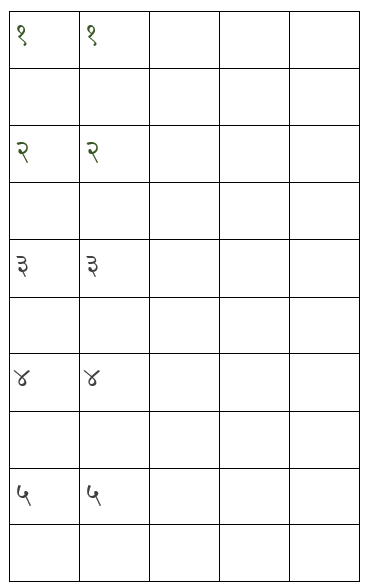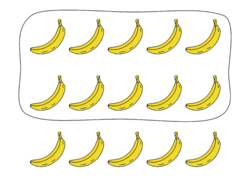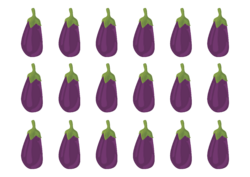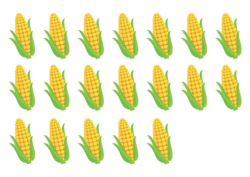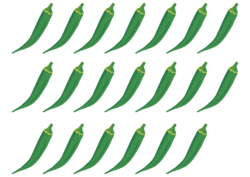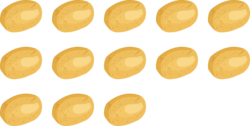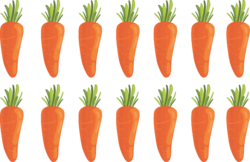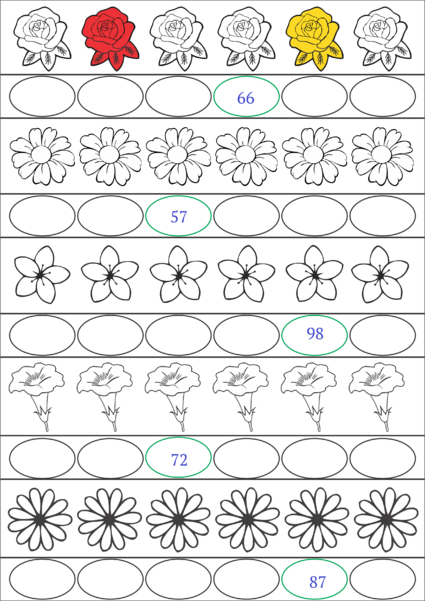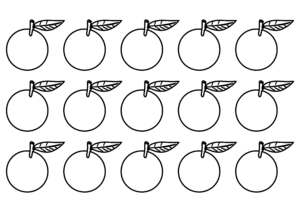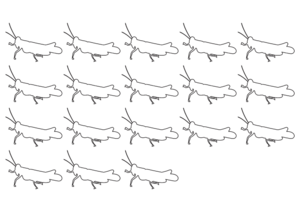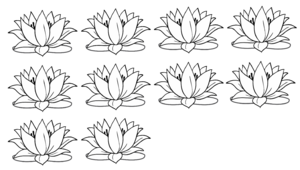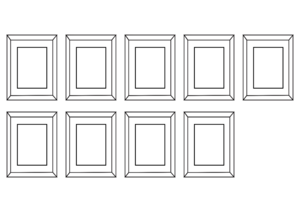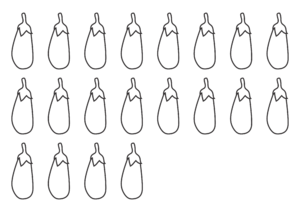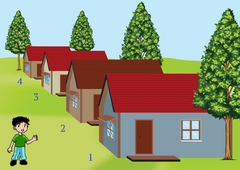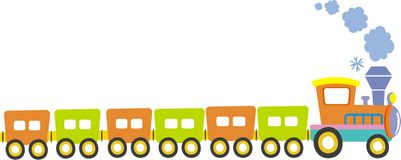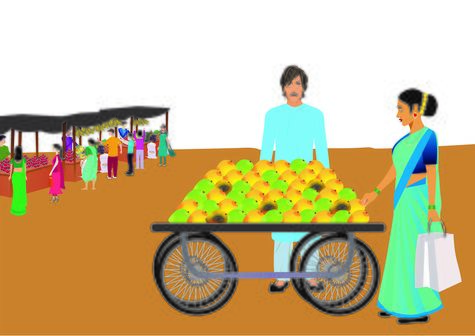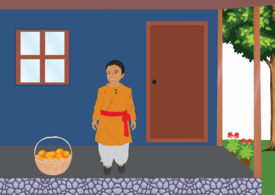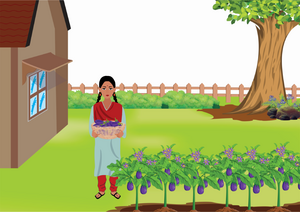Difference between revisions of "Number Knowledge"
| Line 471: | Line 471: | ||
Identify looking at the number and write if it is even or odd, strike out as you write. Place only even numbers in one box and odd into another box. | Identify looking at the number and write if it is even or odd, strike out as you write. Place only even numbers in one box and odd into another box. | ||
{| class="wikitable" | {| class="wikitable" | ||
| − | | rowspan="2" | <s>25</s> <s>18</s> 9 23 | + | |style="height:140px; width:160px;" rowspan="2" | <s>25</s> <s>18</s> 9 23 6 28 34 10 39 11 41 30 15 21 1 29 7 32 43 19 24 17 35 12 46 3 20 13 16 37 49 31 26 8 36 2 14 22 |
| − | |Write Even Numbers | + | |style="height:140px; width:350px;"| Write Even Numbers |
'''18''' | '''18''' | ||
|- | |- | ||
| − | |Write Odd Numbers | + | |style="height:140px; width:350px;"| Write Odd Numbers |
'''25''' | '''25''' | ||
Revision as of 20:48, 26 July 2021
| This article needs editing.
Add and improvise the content from reliable sources. |
Welcome to Class 1 Number Knowledge lesson plan
Learning Objectives
- Read, write and recall numbers (cardinal numbers) from 0 to 120
- Understand partitioning of numbers (introduction to place values)
- Counting forwards and backwards
- Know the position of numbers (ordinal numbers)
- Comparing two 2-digit numbers
- Recognize odd and even numbers (0 to 50)
- Understanding Bhutasankhya sytem
Introduction
Now that we know the importance of mathematics, let us learn to apply counting and calculations in our daily lives. First, we shall recall the numbers learnt till now and practice writing numbers.
| Numbers | Word Forms | Numbers | Word Forms |
|---|---|---|---|
| १ | एकम् | ११ | एकादश |
| २ | द्वे | १२ | द्वादश |
| ३ | त्रीणि | १३ | त्रयोदश |
| ४ | चत्वारि | १४ | चतुर्दश |
| ५ | पञ्च | १५ | पञ्चदश |
| ६ | षट् | १६ | षोडश |
| ७ | सप्त | १७ | सप्तदश |
| ८ | अष्ट | १८ | अष्टादश |
| ९ | नव | १९ | नवदश |
| १० | दश | २० | विंशतिः |
Practice Writing
See the end of this chapter for more practice sheets.
Activity: Find the 10s
Number exercise: Partitioning a 2-digit number.
Draw a line around 10 items and write the remaining numbers as shown in the example.
| 15 = 10 and 5 | 18 = _____ and _____ |
| 19 = _______ and _______ | 20 = _______ and _______ |
| 13 = _______ and _______ | 11 = _______ and _______ |
| 12 = _______ and _______ | 14 = _______ and _______ |
Activity : Expanded forms of Numbers
Number Exercise: Partitioning a 2-digit number (20 to 99) An introduction to place-value system
Write each number identifying the number of groups of 10s
| 34 has 30 and 4 | 78 has 70 and 8 | 91 has ______ and ______ |
| 47 has ______ and ______ | 71 has ______ and ______ | 40 has ______ and ______ |
| 63 has ______ and ______ | 98 has ______ and ______ | 39 has ______ and ______ |
| 76 has ______ and ______ | 81 has ______ and ______ | 53 has ______ and ______ |
| 33 has ______ and ______ | 41 has ______ and ______ | 59 has ______ and ______ |
| Write the missing number | ||
| 99 has 90 and 9 | 36 has 30 and 6 | 85 has ______ and 5 |
| 66 has 60 and ______ | ______ has 20 and 8 | 43 has ______ and 3 |
| ______ has 20 and 4 | 67 has 60 and ______ | ______ has 80 and 8 |
Activity: Identifying and writing expanded forms
Number Exercise: Writing expanded forms (75 to 120)
Activity: Count forward and backward (1s, 2s, 3s, 5s)
Number Exercise: Count forward and backward 50 to 99 (by 1s, 2s, and 3s).
Count forward by 1 and colour that flower yellow. Count backward by 2 and colour that flower red. Write all the numbers in the line given below.
Count by 3 and circle the numbers starting from 1. Join the circled numbers. Colour the picture yellow.
Count by 5 and colour that box red. Count by 10 and colour that box yellow.
| 5 | 10 | 15 | 20 | 25 | 30 | 35 | 40 | 45 | 50 |
| 23 | 28 | 33 | 38 | 43 | 48 | 53 | 58 | 63 | 68 |
| 36 | 41 | 46 | 51 | 56 | 61 | 66 | 71 | 76 | 81 |
| 17 | 22 | 27 | 32 | 37 | 42 | 47 | 52 | 57 | 62 |
Activity: How many of a Total
Number Exercise: Knowing how many in a total number.
Color as many things to match the number given in the box and write the total number on the line given below.
Cardinal and Ordinal Numbers
A cardinal number defines how many (number) of something are present. Example, my friend's house is 4 (four) houses away from my house.
An ordinal number defines where (position) is something located in a list. Example, my friend’s house is the fourth building from my house.
So, if we say there are five persons standing in the line in a bank and the fifth person is wearing a blue shirt, we are
- counting the number of persons, seen standing in a line
- identifying the position of a particular person
Activity: My Train Ride
Number Exercise: Using the cardinal word forms and Ordinal numbers.
During the summer holidays, I went to Manguluru from Bengaluru by a train. The engine is the ___________ (1) and the foremost carriage of the train. My mother told me that a train also has cars in which we all travelled. The engine of our train was very strong. It pulled our long train having _________(18) cars easily even in uphill places. Our car was in the middle, _________ (9) from the engine. I sat by the window and was counting the trains and the number of cars they had. The ______(3) train that sped by us was very long having _________ (22) cars. I was surprised to see that the _________ (6) car of a train standing in a station had the words “Medical Van” written on it. It started to move when the guard waved a green flag standing on the _______ (7) car which was also the train’s last car.
It was fun walking along with my father in a moving train crossing __________ (5) cars to reach the __________ (4) car. It was the food or the pantry car. As the train took a bend in the hills, I saw that the ladies’ car was just _________ (2) cars away from the engine. Our car was followed by three air-conditioned cars which were in __________ (10), ___________ (11) and ____________ (12) places away from the engine. When I got off the train at Manguluru, as I walked towards the station, I saw the railway porters unloading many things from two cars in the rear. They were the ___________ (16) and _________ (17) cars. It was a joyous train ride and I was looking forward to visit my grandparents.
Activity: Pick a sweet mango
Number Exercise – Sorting, Ordinal numbers till 50, Making a number chart
Lakshmi likes sweet mangoes. So, her mother went to the wholesale market to buy mangoes for her to distribute to her friends on her birthday. She knew that ripe mangoes are yellow in color and they are sweet. Lakshmi’s mother wanted to make some mango pickle so she chose unripe mangoes from the carts. From the top row tell the number and position of the ripe and unripe mangoes.
| Ripe Mangoes | Unripe mangoes | ||
|---|---|---|---|
| Cardinal | Ordinal | Cardinal | Ordinal |
Odd and Even Numbers
Let’s talk about sharing now. Rama visited an orange farm when he went to his grandparents’ home. He brought 15 oranges home. And he wondered what he would do with so many oranges…
So, he decided to share them with his friends. He wanted to give the same number of oranges to both his friends.
Don’t we all share with whom we care for.
If Rama equally shared the oranges he had into two baskets...
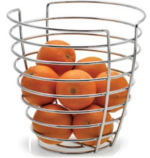
|

|
| Count and write how many oranges are in the basket _________. | Count and write how many oranges are in the basket _________. |
Rama split _____________ out of 15 oranges into two baskets of each and had __________ remaining with him which could not be shared with both his friends. He wondered why he could not share 15 oranges completely. However, he happily shared the rest and ate the one orange himself.
Then he gave the two baskets to his friends and asked his teacher about his activity. The teacher called all the class students. He asked each student what things they had more in number that could be shared with others.
Latha replied that they grew vegetables in their backyard and had grown many brinjal plants.
She had _______________ brinjals. The teacher then asked her to place one brinjal each into two heaps. She placed the brinjals in the following manner.
| Count and write how many brinjals are present _________. | Count and write how many brinjals are present _________. |
She did not have anything left after making two equal groups of brinjals.
The teacher informed that, any
Number ending in 0 2 4 6 8 are called Even
Number ending in 1 3 5 7 9 are called Odd
Rama had 15 oranges, having _________ as an ending number. So, 15 is an ___________ number. After splitting them in to two baskets he had ________ remaining. Rama understood that he had an odd number of oranges.
Latha had 18 oranges having __________ as an ending number. So, 18 is an ___________ number. After splitting them in to two heaps she had _____ with her. Latha came to know that she had an even number of brinjals. Latha gave one heap of brinjals to her neighbour and took one home happily.
Any number that can be split into two equal quantities without any leftover is Even.
Any number that leaves behind something after being split into two sets of equal quantities is Odd.
Activity: Identifying even and odd numbers
Number Exercise – Visual identification of odd and even numbers (0 to 50)
Identify looking at the number and write if it is even or odd, strike out as you write. Place only even numbers in one box and odd into another box.
| Write Even Numbers
18 | |
| Write Odd Numbers
25 |

